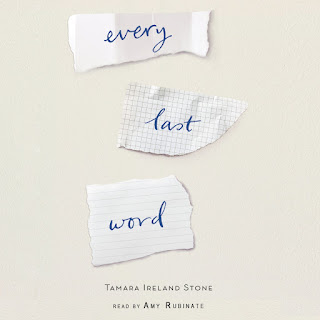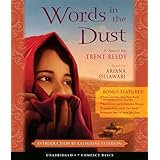Bibliography
Salisbury, Melinda. Read by Amy Shiels.
The Sin Eater's Daughter. Scholastic Audio, 2015. Audiobook.
image from: www.titlewave.com
Summary (from audiobook overview):
"Sixteen-year-old Twylla lives in the castle. But although she's engaged to the prince, no one speaks to her. No one even looks at her. Because Twylla isn't a member of the court. She's the executioner.
As the goddess-embodied, Twylla kills with a single touch. So each week, she's taken to the prison and forced to lay her hands on those accused of treason. No one will ever love her. Who could care for a girl with murder in her veins? Even the prince, whose royal blood supposedly makes him immune to her touch, avoids her.
But then a new guard arrives, a boy whose playful smile belies his deadly swordsmanship. And unlike the others, he's able to look past Twylla's executioner robes and sees the girl, not the goddess. Yet a treasonous romance is the least of Twylla's problems. The queen has a plan to destroy her enemies--a plan that requires an unthinkable sacrifice. Will Twylla do what it takes to protect her kingdom? Or will she abandon her duty in favor of a doomed love?"
My Thoughts
At first, I didn't think I'd get into this book. The author's voice was accented (Irish? Scottish, perhaps?), and I could tell pretty quickly that it was going to be a fantasy read. I just didn't know if I was in the mood for that after listening to Vivian Apple's story. But, I stuck it out and listened. I did catch my mind wandering off and having to back up the book (I was listening) to rehear what I'd zoned out hearing.
My notes as I listened.
You might want to skip these and go on down to the line break if you don't want the book spoiled. As I'm listening, I'm not sure of spelling.--side note: found spellings on the author's web page. HOORAY!
Queen Helewys--evil!
Merek-is Prince (Queen's biological son)
Unspoken pact--ladies cannot become pregnant if the queen cannot. Queen sentences Loreal (sp?); King pardons and then kneels before Queen (unprecedented!).
Lief (new guard)--was to inherit land, father died, ended up at castle
"We must be ghosts. That's how we stay alive in this castle"--Twylla to Lief
Lief kisses her and she doesn’t die!
she is questioning what is truth—doesn’t drink the vial of mornings bane (poison) at The Telling to prove she’s Daunen embodied
King is now “ill”—Twylla confronts Merek and he asks who she’s been talking to—
T's "victims" poisoned beforehand—drops of Oleander in their last meal (Merek confesses)—Tyrek knew it wasn’t Twylla—planned to tell her, so he was killed
“people need something to believe in”—hope.
Twylla is a symbol--had to make people believe new queen is divine to take the thrown
Queen & King pretended Twylla was a tribute to gods
“Why would the man I’m to marry let me think I’m a killer?”-Twylla
Tregellans know MUCH about apothecary—they would know about a poison that kills to the touch..
Tregellans believe in oak, holly gods (Lief doesn’t believe in any gods)…some people just need gods to believe in
Twylla admits that she’s in love with Lief
come up with plan to escape—will let Merek think Twylla will be part of the rouse on the kingdom
Lief and Twylla have sex (implied)
Queen poisons King—wants to marry son (UGH!!!)
Queen accuses Tregellan (Lief?) of killing King
Sin Eater slows down the eating of King’s sin—shows her power (including over the Queen)
Twylla finds out sister died two harvests ago
Twylla realizes that she’s never asked about sister—wanted to leave mother’s house so she wouldn’t be sin eater
says she “deserves” to stay her as punishment—she’ll become the queen (as punishment of sorts)
“I will take the one thing she values and she will know what it means to suffer!” Twylla’s thoughts
Lief returns—Queen “catches” them after sex
Queen has two sons—one by birth and one by inheritance (land/kingdom)
Merek learns of betrayal (he comes in and Queen tells him). Merek is confused, disbelieving
Twylla remembers story of piper—queen summoned Bringer—guess I should have paid more attention to the piper’s story Lief told Twylla. Twylla is figuring out Queen’s motive and tells Merek. Bringer is son of Sleeping Prince—medallion is not filed like Queen said—
she wants own alchemist—to make gold and finance war with Tregellan
MEREK BELIEVES HER! Calls for “trial” and Twylla is a witness. Calls Queen out on the entire lie of Daunen embodied.
Queen says Merek needs her to control the Bringer.
Queen says “how & why did Lief get here”?
Chapter 23-Lief explains that Queen hired him to seduce Twylla, his real backstory—OH MY!
Merek still wants Twylla. She wants to think on this and make sure that SHE wants this.
Lief tries to say that we would have told her truth…he would have run with Twylla and he loves her. “He went back and forth” with Twylla—when he saw Merek kiss her, Lief realized that he loved her
story stops and leaves room for sequel
Epilogue: “wrap, tap, tap”…who is knocking?
__________________________________________________________________________________________________________________________________________________________________
This concept of the "sin eater" is interesting and sprinkled through the story. It made me think of the many lessons we learn about people through our customs.
I'm glad to have listened to this because I wouldn't have pronounced the names correctly. I would say /twi la/ for /twill a/, for example.
Some words I had to look up to see the spelling since I wasn't reading the actual book:
Lormere-land/realm where Twylla lives
Daunen-goddess (ok, "a child of gods, but not a goddess herself"-Twylla to Lief)
Tregellan (a science-minded democracy)
I never did find the best friend that Twylla killed early in the book. It starts with a "T" I think.
While researching, I read some reviews through Titlewave (my book vendor) and found this:
"Twylla's mother is a Sin Eater, one who eats symbolic foods of the deceased person's sins at their grave site;
Salisbury's concept is not new: Tahereh Mafi's Shatter Me (HarperCollins, 2011) and Kristin Cashore's Graceling (Houghton Harcourt, 2008) have similar heroines with tactile killing powers. However, her luscious world-building and mythology make this fantasy a worthy read. Twylla is strong and sensible, and teen fans of royal intrigue titles will be rooting for her.-Amanda C. Buschmann, Atascocita Middle School, Humble, TX (c) Copyright 2014. Library Journals LLC, a wholly owned subsidiary of Media Source, Inc. No redistribution permitted."
I thought this part interesting, since I recently finished Graceling. Yes, I can see some parallels between the two stories. Interesting timing. I am always amused when it seems my reading connects.
Ok, when I saw that I only had 8 minutes left to listen, I was afraid that 1. my download wasn't complete or 2. the story was going to drop and leave me waiting for a sequel--the second option happens.
Here's something I found on the author's website that I thought was good (melindasalisbury.com):
"I thought I was writing a fairytale; a girl in a tower who falls in love at the wrong time. A wicked queen, and a handsome prince and a damsel in distress. It’s a tale as old as time, and one we all know.

And I did write that. All of those things are in the book. What I didn’t realise until the end was that it was also a story about emotional abuse. Control. Manipulation, lies, and threats. Neglect. Growing up in a loveless environment. Being taken advantage of. Being used.
In writing about a girl who is trapped by her heritage, and her abilities, and her gender, I wrote about a girl discovering who she is, and what she wants, in a world that’s never considered she may be anything more than what it decides for her. I thought I was telling a story about a caged bird who longed to be freed. And I was. but it was also more. Darker. Less palatable. Twylla’s story might be fiction, but for a lot of girls it isn’t."
Yes, I agree. This is a fairy tale story that we all know, but yet it isn't. The author puts a name pronunciation guide on her website (I should have looked at her site sooner). Also on the author's website, I learned that this book may come "alive" on television. I hope the author gets to help create this version of her story.




























